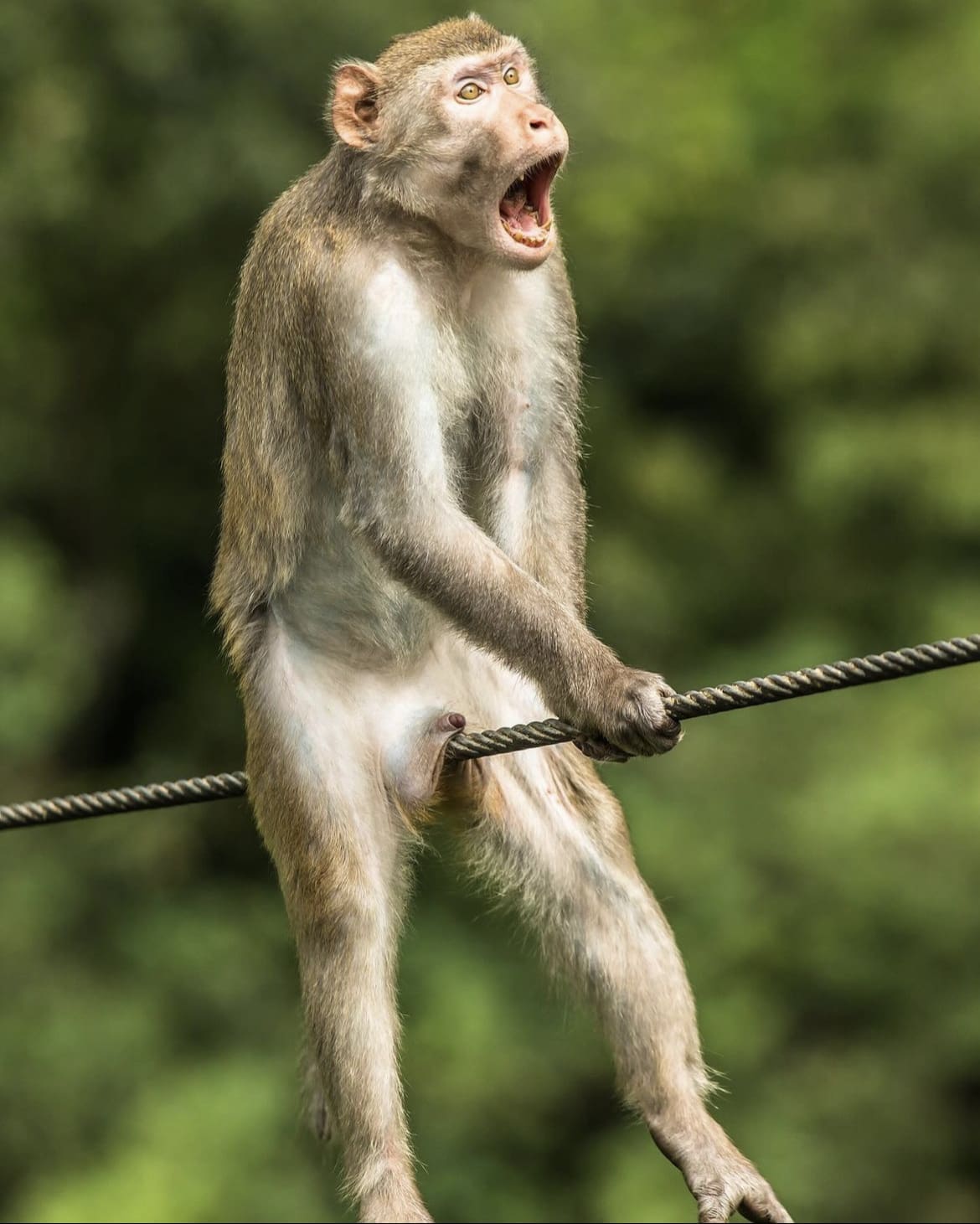[social_warfare]
Picture this: You’re enjoying a leisurely stroll through Kam Shan Country Park, a verdant oasis amidst Hong Kong’s bustling urban landscape, when suddenly, you’re not alone. A band of wild monkeys, seemingly sprung from the pages of a travelogue, decides you’re today’s main event.
It’s not the kind of close encounter you’d hoped for, but it’s exactly what happened to one unsuspecting individual in this packed province, marking a bizarre twist in the annals of human-wildlife interactions.
In a rare and frankly alarming turn of events, a 37-year-old bloke found himself at the business end of a monkey assault, landing him squarely in the intensive care unit of Yan Chai Hospital. Admitted with symptoms no one wants a piece of—fever, decreased consciousness—the man’s tale quickly spiraled from a cautionary anecdote into a medical marvel.
His diagnosis? The first confirmed human infection of the B virus in the city. Yes, you heard that right. The B virus, also known by its less catchy monikers herpes B, monkey B virus, herpesvirus simiae, and herpesvirus B, has jumped species in a move that would make any pandemic movie blush.

Here we go again?
Now, before you bolt your doors and swear off nature walks, let’s dive a little deeper. The B virus is no newcomer to the scene; it’s been around the block since 1932. But with only about 50 cases recorded worldwide, it’s the kind of rare you’d associate with winning the lottery—though, admittedly, with less favorable odds.
This virus is typically a monkey’s burden to bear, leading to severe brain damage and, often, death in our primate cousins. Yet, for humans, the risk of catching this viral hitchhiker has been astonishingly low… until now.
Hong Kong’s very own microbiologist, Ho Pak-leung, and infectious disease expert Joseph Tsang Kay-yan have chimed in, offering a blend of reassurance and stark warning.
While the risk of contracting the B virus remains extremely low for those without open wounds, its journey into the human body is nothing short of disastrous. The virus boasts a terrifying fatality rate, potentially as high as 80% if it reaches the central nervous system and isn’t met with swift antiviral retaliation.

As this story unfolds, it serves as a wild reminder of our intricate and sometimes precarious relationship with nature. The local authorities, in a bid to prevent future plot twists of this nature, have issued advice that reads like a guide to dealing with Hollywood celebrities: don’t touch them, don’t feed them, and definitely don’t lock eyes.
Add to that, avoiding eating in their presence or engaging in any behavior that could be seen as a challenge, and you’ve got yourself a survival guide for monkey encounters.
This saga of man versus nature highlights a critical point: as our cities expand and wild habitats contract, these interactions are likely to increase. This isn’t just about one man’s unfortunate encounter in a park; it’s a chapter in the ongoing narrative of human expansion and wildlife adaptation.
As we venture into their territories, the least we can do is tread lightly, respect our furry neighbors, and, maybe, keep a healthy distance.
In the end, our protagonist remains in a battle against the B virus, a stark reminder of the unpredictability of our world. His story isn’t just a cautionary tale; it’s a call to awareness and respect for the delicate balance between human and wildlife domains.
So, the next time you find yourself in the proximity of wild monkeys, remember: admiration from afar is not only wise but recommended. After all, nobody wants to be the next viral sensation—literally.
